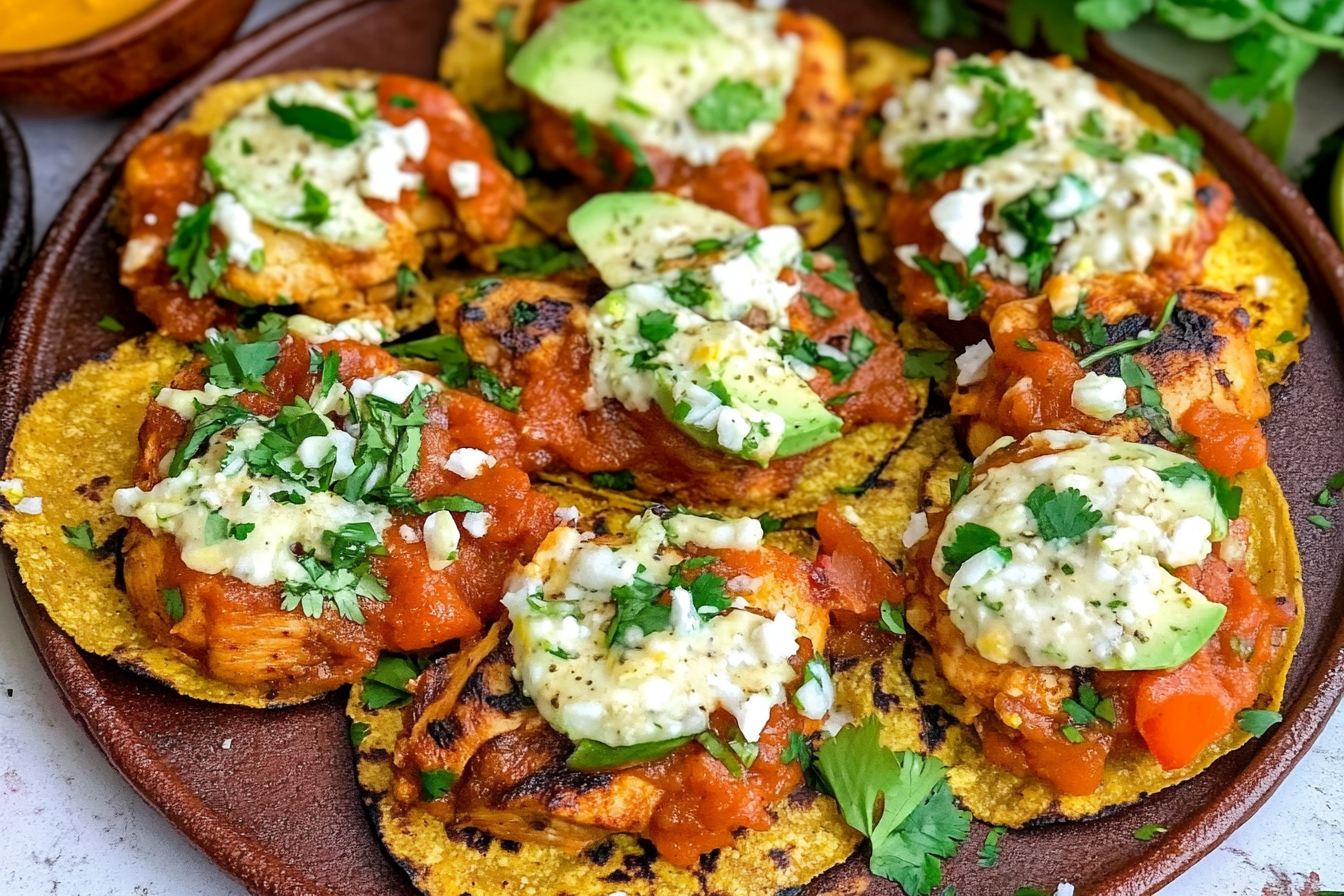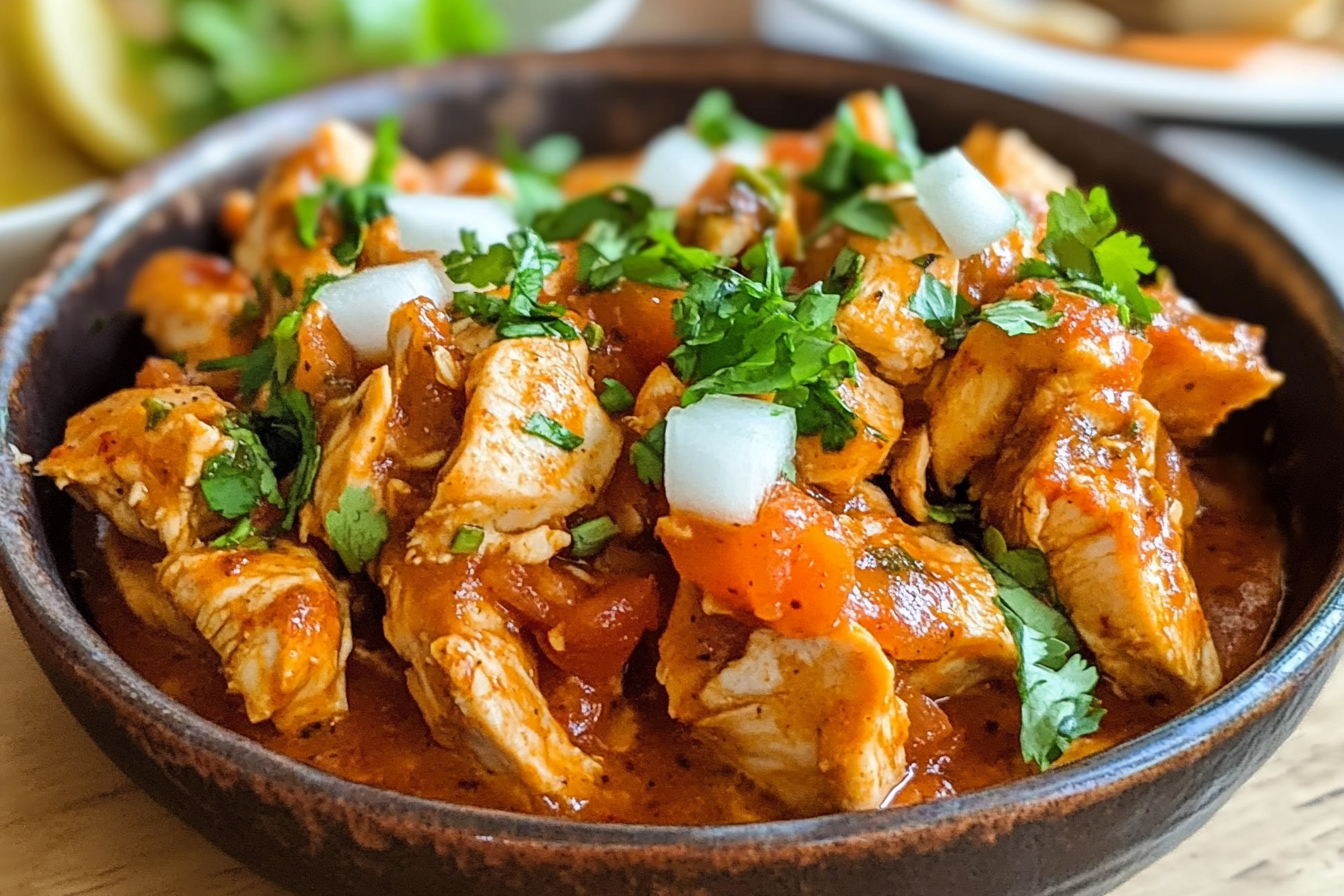Chicken Tinga is a staple dish in Mexican cuisine, celebrated for its smoky, spicy, and savory flavors. Versatile and rich in taste, Tinga can be used in tacos, tostadas, burritos, and even rice bowls. The dish is made by shredding chicken or other meats and cooking it in a flavorful sauce made from tomatoes, onions, and chipotle chilis. The history and preparation of Tinga are rooted deeply in Mexican culture, particularly in the Puebla region, where the dish was first created.
This article will explore the meaning of Tinga, its cultural importance, how to prepare it, and how it has become a key part of modern Mexican cuisine. Whether you’re a fan of Mexican food or new to this iconic dish, this comprehensive guide will walk you through everything you need to know.
The Meaning of Tinga
Tinga comes from the Nahuatl language, spoken by Mexico’s indigenous people. The word “tingatl” translates to “tear” or “shred,” which fits perfectly because Tinga involves shredding meat, typically chicken. The meat is slow-cooked until tender, then shredded by hand or with forks. Though Chicken Tinga is the most popular version, you’ll also find variations made with pork, beef, or even vegetarian options like jackfruit.
Tinga represents more than just a cooking technique. It symbolizes a blend of indigenous cooking methods and European ingredients, particularly tomatoes and onions, introduced by the Spanish. Over time, this dish evolved into a culinary favorite in Mexican homes, offering a snapshot of the rich, cultural fusion that defines Mexican cuisine.
Cultural Significance of Tinga in Mexican Cuisine
Tinga is closely tied to the state of Puebla, a region renowned for its culinary traditions. Puebla is famous for dishes like mole poblano and chiles en nogada, which blend indigenous and European flavors. Much like these dishes, Tinga highlights the cultural and culinary blending that occurred after the Spanish colonization of Mexico.
Tinga is often served during family gatherings, festivals, and holidays, making it a staple in Mexican homes. Because the meat is shredded, the dish can be prepared in large quantities, making it ideal for feeding crowds. Each family adds its own twist, resulting in countless variations of the same dish. This makes Tinga not only a meal but also a reflection of family traditions and cultural pride.
For more insight into the history and cultural significance of Mexican food, check out this guide on Mexican cuisine and culture.

Historical Origins of Tinga
Indigenous Roots of Tinga
Before the Spanish arrived in Mexico, indigenous people had a well-developed cuisine based on maize, beans, and chilies. Slow-cooking meat was already a common practice. Tinga draws from this tradition, with the meat slow-cooked to allow maximum flavor absorption. The indigenous people often boiled or roasted meats, which laid the groundwork for what would become Tinga.
After the Spanish introduced tomatoes and onions, these ingredients quickly became integral to the dish. Indigenous cooks incorporated these new foods into their existing cooking techniques, creating the tomato-based sauce that defines Tinga today.
The Role of Puebla in Tinga’s Development
Tinga is most closely linked to Puebla. Known for its culinary diversity, this region played a crucial role in blending European and indigenous cooking methods. Located in central Mexico, Puebla became a melting pot of ingredients and techniques, contributing significantly to the evolution of Mexican cuisine.
One of Puebla’s most notable historical events is the Battle of Puebla, which occurred on May 5, 1862. This victory over French forces is commemorated each year during Cinco de Mayo. During this celebration, families and restaurants often serve Tinga, highlighting its importance as a traditional dish. Over time, Tinga became a symbol of Mexican heritage and resilience.
For more traditional Mexican dishes like Tinga, check out this recipe for brisket sandwich, another great way to enjoy shredded meat.
Key Ingredients in Chicken Tinga
Essential Ingredients
Though the recipe may vary, Chicken Tinga typically includes a few essential ingredients. Here’s a breakdown:
- Shredded Chicken: Most Tinga recipes call for chicken breasts or thighs, slow-cooked until tender. The chicken is then shredded by hand or with forks.
- Tomatoes: Fresh or canned tomatoes form the base of the sauce, providing sweetness and acidity.
- Chipotle Chilis in Adobo: These smoked jalapeño peppers give Tinga its signature smoky heat.
- Onions: Sliced onions are sautéed until soft, adding depth to the sauce.
- Garlic: A small amount of minced garlic enhances the overall flavor.
- Spices: Common spices include oregano, thyme, and bay leaves. Some recipes may also feature cumin for extra warmth.
- Chicken Stock: Used to thin the sauce and add richness.
Optional Ingredients and Variations
Chicken Tinga offers flexibility for those looking to try different versions:
- Pork Tinga: Substitute shredded pork shoulder for chicken to create a heartier dish.
- Beef Tinga: Shredded beef is also a popular option, especially in northern Mexico.
- Vegetarian Tinga: Replace the meat with jackfruit or mushrooms for a vegetarian twist.
Some versions also add piloncillo (unrefined cane sugar) to balance the smoky and spicy flavors. This sweet ingredient adds complexity to the dish, making it both rich and satisfying.
How to Prepare Chicken Tinga: A Step-by-Step Guide
Preparing Tinga requires some time but is relatively simple. Here’s a step-by-step guide for creating this delicious dish:
Step 1: Cook the Chicken
Start by boiling or poaching chicken breasts or thighs in salted water. Cook the chicken until it’s tender enough to shred. Once the meat cools, shred it by hand or with two forks. This process helps the meat absorb more of the sauce’s flavor later on.
Step 2: Make the Sauce
Heat oil in a large pan and sauté the onions until they become translucent. Add the garlic and cook for another minute. Then, add the tomatoes and chipotle chilis. Let the mixture simmer until the tomatoes break down and the sauce thickens. The chipotle adds that essential smokiness while the tomatoes contribute sweetness.
Step 3: Add Seasoning
Next, season the sauce with oregano, thyme, and bay leaves. If the sauce is too thick, pour in a cup of chicken stock. Let the mixture simmer for about 10 minutes so the flavors can meld together. Don’t forget to taste and adjust the salt levels as needed.
Step 4: Combine Chicken with Sauce
Stir the shredded chicken into the sauce and let it simmer for another 10-15 minutes. This allows the chicken to soak up the rich, smoky flavors of the sauce.
Step 5: Serve
You can serve Tinga on tostadas, in tacos, or over rice. Garnish with toppings like sour cream, avocado slices, cilantro, and crumbled cheese for added flavor and texture.
For a tasty twist on Tinga, check out this pepper jack cheese guide to see how spicy cheeses can add extra kick to your dish.
Traditional and Modern Ways to Serve Tinga
Traditional Serving Methods
Tinga is incredibly versatile. Traditionally, it’s served in the following ways:
- Tostadas: One of the most common methods. Crispy tortillas are topped with Tinga, lettuce, sour cream, cheese, and avocado.
- Tacos: Soft or crispy tortillas filled with Tinga, garnished with onions, cilantro, and lime juice.
- Burritos: Wrapped in large tortillas with rice, beans, and cheese for a hearty meal.
- Rice Bowls: Tinga served over rice, topped with guacamole, black beans, and salsa.
Modern Serving Ideas
As Tinga has spread worldwide, cooks have found new, creative ways to serve it:
- Tinga Pizza: Spread Tinga over a pizza crust, top with cheese, and bake. Garnish with fresh cilantro and sour cream for a Mexican-inspired pizza.
- Tinga Nachos: Layer tortilla chips with Tinga, beans, and cheese. Bake until the cheese melts, then top with guacamole and salsa.
- Tinga Salad: Serve Tinga over greens with fresh corn, tomatoes, avocado, and a lime vinaigrette for a lighter meal.
Nutritional Benefits of Tinga
Tinga offers many health benefits, especially when prepared with lean chicken. Here’s why it’s a healthy option:
- High in Protein: Chicken provides a high-protein content, essential for muscle growth and repair.
- Low in Fat: Using chicken breast makes this dish low in fat, especially if you use minimal oil.
- Rich in Vitamins and Minerals: Tomatoes and onions are full of vitamins like vitamin C and vitamin A, as well as essential minerals like potassium.
- Low in Carbohydrates: With a base of shredded chicken and vegetables, Tinga is naturally low in carbs. This makes it ideal for low-carb or keto diets, especially if served in lettuce wraps or over cauliflower rice.
Frequently Asked Questions (FAQs) About Tinga
What is Chicken Tinga Made Of?
Chicken Tinga consists of shredded chicken cooked in a sauce made from tomatoes, chipotle chilis, onions, and spices like oregano and thyme. The sauce’s smoky flavor comes from the chipotle chilis, which are smoked jalapeños stewed in adobo sauce.
Is Tinga Spicy?
Tinga has a smoky, medium-level spiciness, thanks to the chipotle chilis. If you prefer milder dishes, you can reduce the number of chilis used or substitute them with poblano peppers for less heat.
What Does Tinga Taste Like?
Tinga has a rich, smoky flavor with a combination of sweetness from the tomatoes and heat from the chipotle chilis. The shredded chicken absorbs the sauce, making it tender and flavorful.
Can You Make Tinga with Other Meats?
Yes! While Chicken Tinga is the most common, you can make Tinga with pork, beef, or vegetarian substitutes like jackfruit. Each variation offers its own unique flavor profile.
For more insights into making vegetarian dishes, check out fruit platter ideas that could complement a lighter version of Tinga.
Tinga and Mexican Celebrations
Cinco de Mayo and Tinga
Tinga holds a special place during Cinco de Mayo celebrations, especially in Puebla, where the dish originated. On May 5, families and restaurants prepare Tinga to honor Mexican culture and heritage. The dish serves as a symbol of Mexican pride, reflecting Puebla’s importance in Mexican history.
Family Gatherings
Beyond public holidays, Tinga is a favorite at family gatherings. Its ability to feed large groups makes it perfect for family meals, birthday parties, and holiday dinners. Mexican families often prepare large batches of Tinga, making it the centerpiece of a communal meal.
The Global Influence of Tinga
Tinga has grown in popularity worldwide, especially in the U.S., where Mexican cuisine has become mainstream. It’s now common to find Tinga on menus at Mexican restaurants, food trucks, and even in fusion dishes. The versatility of Tinga makes it easy for chefs and home cooks to experiment with new flavors, from Tinga pizzas to Tinga salads.
Fusion cuisine, in particular, has embraced Tinga, blending it with non-Mexican ingredients to create entirely new dishes. This modern approach reflects the adaptability and timeless appeal of this Mexican classic.
Conclusion
Tinga beautifully represents the fusion of indigenous Mexican and Spanish culinary traditions. Its smoky, rich flavor, along with simple ingredients, allows for versatile adaptations in various dishes. Whether you enjoy it in its traditional form or prefer to explore modern takes like Tinga pizza or nachos, this dish remains a beloved staple in Mexican homes and kitchens around the world.
As Tinga continues to gain popularity, it serves as a testament to the rich, diverse culinary heritage of Mexico. The next time you’re looking to try something flavorful and deeply rooted in Mexican culture, prepare a batch of Chicken Tinga and share in this long-standing tradition.
For more Mexican recipes and ideas on creative ways to use Tinga, visit Eira Recipes, where you’ll find a range of delicious dishes that reflect the rich flavors of Mexican cuisine.


